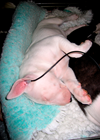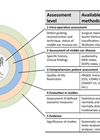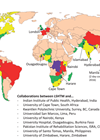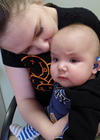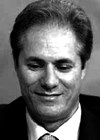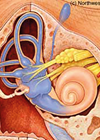Audiology features
Otoacoustic emissions in the diagnostic test battery for hearing loss
So, they are great for screening, but how can otoacoustic emissions be integrated into the diagnostic test battery? Beth Prieve examines the role of diagnostic OAEs by asking three simple questions. Audiologists and otolaryngologists are familiar with otoacoustic emissions (OAEs)...
Canine hearing testing and the role of otoacoustic emission tests
Otoacoustic emissions testing is an accepted method of hearing testing in humans, but have you ever considered the situation in dogs? This article discusses deafness and hearing testing in dogs and the current role of OAE testing in this species....
Measuring audiological outcomes in the paediatric setting
In this article Marlene Bagatto argues that a range of outcome measures and instruments need to be implemented when working with children and families. She demonstartes how these support both clinicians and families. The primary goal of early hearing detection...
Health related quality of life measures as outcome parameters in middle ear diseases
Surely the only outcome needed for post-surgical ears is a better PTA? Marcus Neudert argues there should be more to it than that. To draw a comprehensive picture of the disease-associated restrictions in patients with chronic otitis media, audiometric outcome...
The mounting burden of hearing loss worldwide: gearing up global collaboration
As audiology and ENT professionals we all have an inkling about the prevalence and impact of hearing loss, but the true gravity of the situation is even greater than previously thought… It may seem hard to believe, but in the...
World Health Assembly adopts a resolution on hearing loss: a defining moment for the global hearing health community
The World Health Assembly recently adopted a resolution on hearing loss. In this article Shelly Chadha and Alarcos Cieza outline how the resolution came to be and how the World Health Organization and its partners plan to implement it. The...
Public health planning for hearing impairment (2017)
In 2009 Professor Andrew Smith and Dr Daksha Patel identified the need for awareness of public health methods in hearing healthcare planning. In 2010 the first training course was held, and since then 760 health workers from 41 countries have...
Infant hearing loss impacts spoken language development: identify and intervene early
Early hearing detection and intervention programmes have been implemented in many countries across the globe, but why are these programmes so important and how are our Canadian colleagues managing this process? The consequences of being born with a permanent hearing...
Unanswered questions in adult ototoxicity associated with platinum-based chemotherapy
Do the potential side-effects on hearing and tinnitus need to be a ‘necessary evil’ of platinum-based chemotherapy? How strong is our evidence base when offering advice to patients and fellow clinicians? David Baguley and his team from the University of...
Diabetes and hearing loss: a review
As hearing health professionals we often ask, especially in older patients, if they have diabetes; but what is the link? How is it manifested and should it change current practice? Alec Lapira reviews the changing evidence. Early attempts to establish...
Thyroid dysfunction and Meniere’s disease: is there a relationship?
The set of symptoms described as Meniere’s disease may have several causative factors. Timothy Hain and Patthida Maroongroge look for a relationship in the literature between Meniere’s disease and hypothyroidism. Meniere’s disease (MD) affects around two in 1000 people and...
Congenital CMV: investigations and management in the audiology setting
Congenital cytomegalovirus (cCMV) is the only cause of congenital sensorineural hearing loss (SNHL) for which there is a medical treatment available to prevent further hearing loss. Dr Simone Walter discusses cCMV infection, cCMV-related hearing loss, and how to facilitate their...



